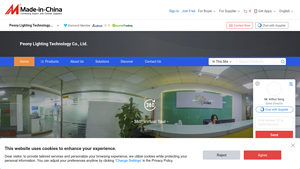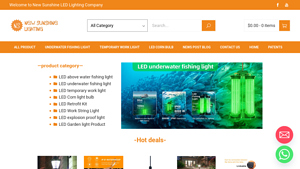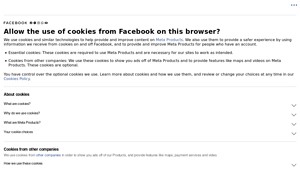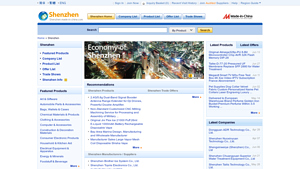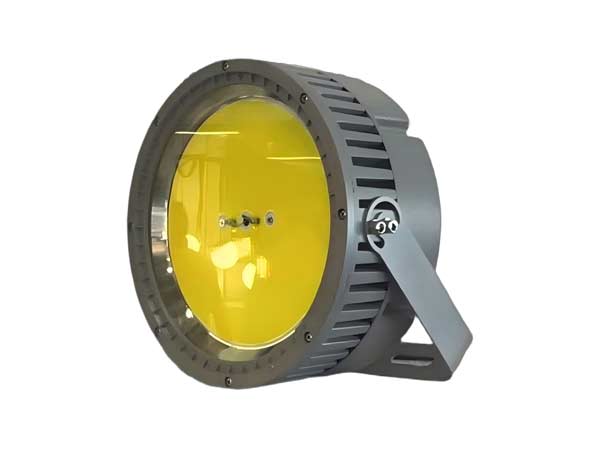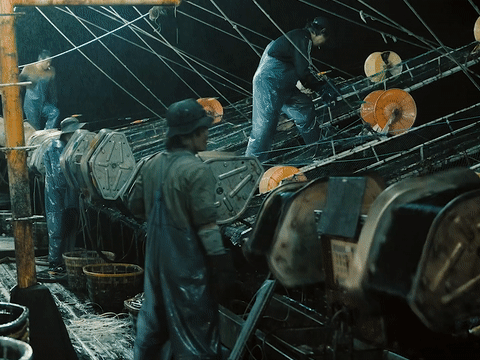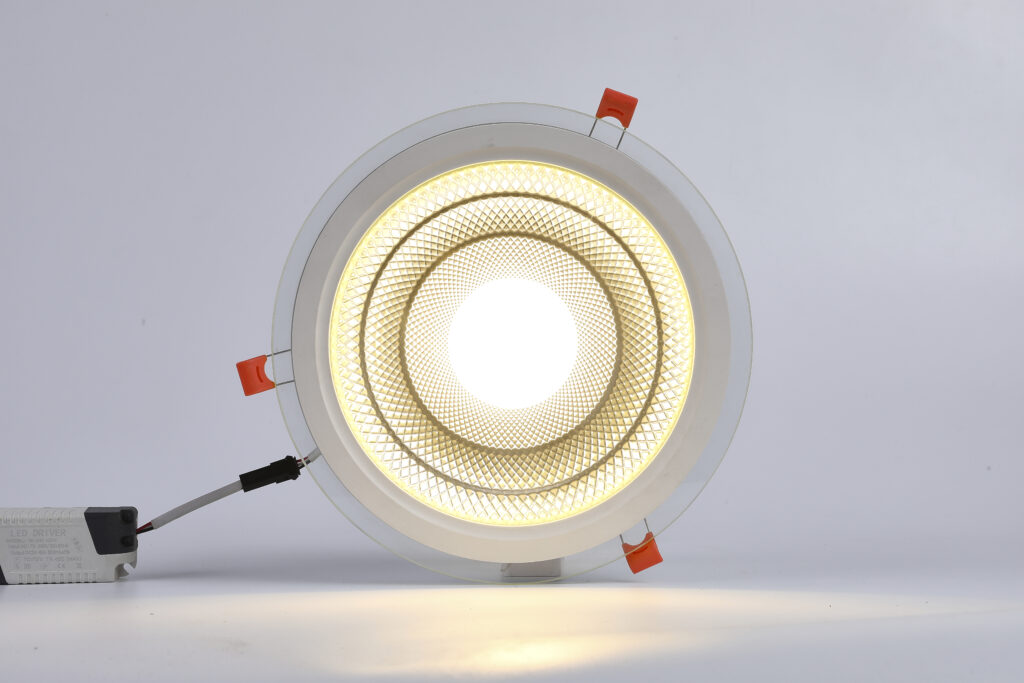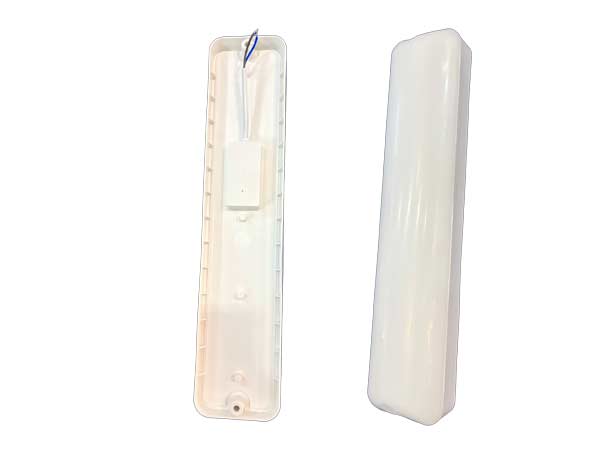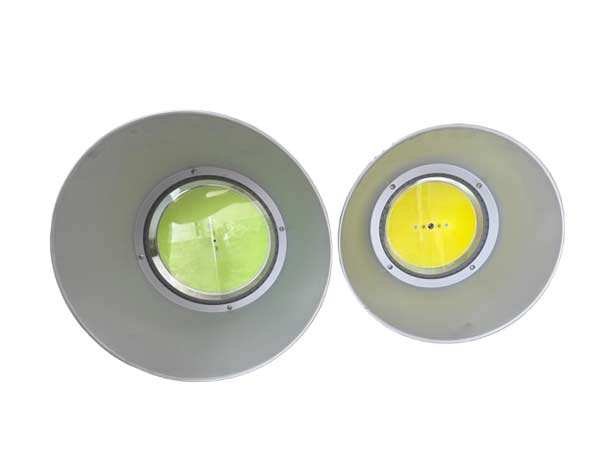Article Navigation
- Introduction: Navigating the Global Market for Looking for 1500W LED fishing light
- Understanding Looking for 1500W LED fishing light Types and Variations
- Key Industrial Applications of Looking for 1500W LED fishing light
- Strategic Material Selection Guide for Looking for 1500W LED fishing light
- In-depth Look: Manufacturing Processes and Quality Assurance for Looking for 1500W LED fishing light
- Comprehensive Cost and Pricing Analysis for Looking for 1500W LED fishing light Sourcing
- Spotlight on Potential Looking for 1500W LED fishing light Manufacturers and Suppliers
- Essential Technical Properties and Trade Terminology for Looking for 1500W LED fishing light
- Navigating Market Dynamics, Sourcing Trends, and Sustainability in the Looking for 1500W LED fishing light Sector
- Frequently Asked Questions (FAQs) for B2B Buyers of Looking for 1500W LED fishing light
- Important Disclaimer & Terms of Use
- Strategic Sourcing Conclusion and Outlook for Looking for 1500W LED fishing light
Introduction: Navigating the Global Market for Looking for 1500W LED fishing light
In the ever-evolving global marketplace, B2B buyers are increasingly recognizing the vital role of specialized equipment in enhancing operational efficiency and productivity. Among these, the 1500W LED fishing light stands out as a transformative tool for commercial fishing operations, offering superior visibility and energy efficiency. As international markets expand, particularly in regions such as Africa, South America, the Middle East, and Europe, understanding the nuances of sourcing these advanced lighting solutions is crucial for businesses aiming to stay competitive.
This guide serves as a comprehensive resource for B2B buyers seeking to navigate the complexities of acquiring 1500W LED fishing lights. It delves into key considerations, including technology trends, supplier evaluation, and compliance with regional regulations. By equipping decision-makers with actionable insights, this guide empowers them to make informed sourcing decisions that align with their operational needs and sustainability goals.
In an industry where quality and reliability are paramount, understanding the specifications, performance metrics, and maintenance requirements of LED fishing lights can significantly impact operational outcomes. This guide will not only illuminate the path to effective procurement but also foster partnerships with reputable suppliers, ensuring that businesses can leverage the full potential of LED technology in their fishing endeavors. As you embark on this journey, consider how a well-informed approach to sourcing can lead to improved productivity and profitability in your operations.
Understanding Looking for 1500W LED fishing light Types and Variations
| Type Name | Key Features | Primary B2B Applications | Pros | Cons |
|---|---|---|---|---|
| Submersible LED Fishing Light | Waterproof, typically designed for underwater use. | Commercial fishing, aquaculture, recreational fishing. | Effective in attracting fish; durable in harsh conditions. | Limited visibility above water; requires careful handling. |
| Floating LED Fishing Light | Buoyant, can be easily deployed on water surfaces. | Sport fishing, charter services, night fishing tours. | Easy to use and reposition; visible from a distance. | Wind and current can move it away from desired location. |
| Portable LED Fishing Light | Battery-operated, lightweight, and easy to transport. | Small-scale fishing, camping, and recreational use. | Versatile and user-friendly; no need for external power. | Shorter battery life; may not be as powerful as fixed options. |
| Docking LED Fishing Light | Fixed installation, often mounted on piers or docks. | Marinas, fishing lodges, and private docks. | Provides consistent light; enhances safety in docking areas. | Installation required; less mobile. |
| High-Intensity LED Fishing Light | Very bright, designed for deep sea fishing. | Commercial deep-sea fishing, research vessels. | Extremely effective in attracting a wide range of fish. | Higher energy consumption; may require specialized equipment. |
Submersible LED Fishing Light
Submersible LED fishing lights are designed to operate underwater, making them ideal for attracting fish in deep or murky waters. Their waterproof construction ensures durability, allowing them to withstand the harsh marine environment. Commonly used in commercial fishing and aquaculture, these lights are highly effective at luring various fish species, thus enhancing catch rates. However, they require careful handling and can be less visible above the water’s surface.
Floating LED Fishing Light
Floating LED fishing lights are buoyant and can be easily deployed on the surface of the water. They are particularly popular among sport fishing and charter services due to their ease of use and high visibility from a distance. These lights work effectively at night, attracting fish to the area. However, floating lights can be affected by wind and currents, which may necessitate frequent repositioning.
Portable LED Fishing Light
Portable LED fishing lights are battery-operated, lightweight, and designed for easy transportation. They are ideal for small-scale fishing, camping trips, and recreational use. Their versatility makes them a favorite among casual anglers who need a user-friendly lighting solution. Despite their convenience, portable lights may have a shorter battery life and might not provide the same intensity as more permanent lighting options.
Docking LED Fishing Light
Docking LED fishing lights are typically fixed installations that can be mounted on piers, docks, or marinas. They are commonly used in commercial settings, such as fishing lodges and marinas, to provide consistent lighting for docking and safety purposes. While they enhance visibility and safety, their fixed nature means they are less mobile and require installation, which may involve additional costs.
High-Intensity LED Fishing Light
High-intensity LED fishing lights are designed for deep-sea fishing and are known for their exceptional brightness. These lights attract a wide variety of fish, making them essential for commercial deep-sea fishing operations and research vessels. While they are highly effective, they also consume more energy, which may require specialized equipment or power sources to operate efficiently.
Key Industrial Applications of Looking for 1500W LED fishing light
| Industry | Specific Application | Business Value | Sourcing Considerations |
|---|---|---|---|
| Commercial Fishing | Night Fishing Operations | Enhanced visibility during nighttime fishing leads to higher catch rates. | Ensure compliance with local regulations on light use. |
| Aquaculture | Fish Farm Lighting | Optimal lighting conditions improve fish growth and health, increasing yield. | Look for energy-efficient and waterproof designs. |
| Marine Research | Research Vessel Illumination | Provides necessary lighting for nocturnal studies, enhancing research outputs. | Consider durability and compatibility with marine environments. |
| Recreational Fishing | Charter Boat Services | Attracts fish to boats, enhancing customer experience and satisfaction. | Assess weight and portability for easy installation. |
| Environmental Monitoring | Wildlife Observation and Surveying | Facilitates nighttime monitoring of aquatic ecosystems, aiding conservation efforts. | Evaluate energy consumption and environmental impact. |
Detailed Applications
Commercial Fishing
In commercial fishing, the 1500W LED fishing light is pivotal for night fishing operations. These powerful lights illuminate large areas of water, attracting fish and improving catch rates significantly. The increased visibility allows fishermen to target specific species more effectively, maximizing their harvest. When sourcing these lights, buyers should ensure they meet local regulations regarding brightness and light spectrum to avoid negative impacts on marine life.
Aquaculture
In aquaculture, LED fishing lights play a crucial role in creating optimal growth conditions for farmed fish. By simulating natural light patterns, these lights can enhance fish health, stimulate feeding, and increase overall yield. The energy efficiency of 1500W LEDs is particularly attractive for aquaculture businesses looking to reduce operational costs. Buyers should prioritize waterproof and corrosion-resistant models to withstand harsh aquatic environments.
Marine Research
Marine research operations often require specialized lighting for nocturnal studies. The 1500W LED fishing light enables researchers to observe behaviors and collect data during night hours, which is essential for many species. The ability to adjust light intensity and spectrum can yield better research results. When sourcing these lights, durability and compatibility with marine conditions are key factors to consider.
Recreational Fishing
For charter boat services, using 1500W LED fishing lights enhances the fishing experience for customers by attracting fish to the boat. This not only increases the likelihood of a successful catch but also improves customer satisfaction and repeat business. Buyers in this sector should assess the portability and ease of installation of the lights to ensure quick setup and removal.
Environmental Monitoring
In environmental monitoring, 1500W LED fishing lights assist in nighttime wildlife observation and surveying. These lights help researchers and conservationists monitor aquatic ecosystems and gather crucial data without disturbing the environment. When sourcing, it’s essential to evaluate the lights’ energy consumption and environmental impact to align with sustainability goals.
Strategic Material Selection Guide for Looking for 1500W LED fishing light
When selecting materials for a 1500W LED fishing light, it’s crucial for B2B buyers to consider the properties, advantages, and disadvantages of various materials. The right choice can significantly impact performance, durability, and overall cost-effectiveness. Below, we analyze four common materials used in the manufacturing of LED fishing lights, focusing on their specific attributes and applications.
1. Aluminum
Properties:
Aluminum is lightweight, corrosion-resistant, and has excellent thermal conductivity. This makes it a popular choice for outdoor lighting solutions.
Pros:
- Lightweight: Easy to handle and install, reducing shipping costs.
- Corrosion Resistance: Aluminum’s natural oxide layer protects it from environmental factors, making it suitable for marine applications.
- Thermal Conductivity: Helps dissipate heat generated by the LEDs, enhancing performance and longevity.
Cons:
- Cost: While generally affordable, high-grade aluminum can be more expensive than other materials.
- Strength: Aluminum may not withstand extreme impacts as well as some metals.
Application Impact:
Aluminum is ideal for housing and fixtures in LED fishing lights, ensuring durability while maintaining a lightweight profile.
2. Polycarbonate
Properties:
Polycarbonate is a high-impact plastic known for its strength and optical clarity. It is UV-resistant and can withstand harsh environmental conditions.
Pros:
- Impact Resistance: Highly durable and less likely to shatter than glass, making it suitable for rugged use.
- Lightweight: Easier to install and transport.
- UV Stability: Resists yellowing and degradation from sunlight exposure.
Cons:
- Scratch Sensitivity: Can be prone to scratches, which may affect light clarity over time.
- Heat Resistance: Lower heat tolerance compared to metals, which could limit its application in high-heat environments.
Application Impact:
Polycarbonate is commonly used for lenses and protective covers, providing safety without compromising light output.
3. Stainless Steel
Properties:
Stainless steel is a robust alloy known for its strength, corrosion resistance, and aesthetic appeal. It has a higher density than aluminum and polycarbonate.
Pros:
- Corrosion Resistance: Particularly advantageous in saltwater environments, preventing rust and degradation.
- Strength: Offers exceptional structural integrity, capable of withstanding harsh conditions.
- Aesthetic Appeal: Provides a modern look, enhancing the product’s overall design.
Cons:
- Weight: Heavier than aluminum and polycarbonate, which can increase shipping and installation costs.
- Cost: Typically more expensive than both aluminum and plastic options.
Application Impact:
Stainless steel is often used in mounting hardware and structural components where strength and corrosion resistance are paramount.
4. Glass
Properties:
Glass is a traditional material known for its clarity and aesthetic qualities. It is often used in lenses and protective elements of lighting products.
Pros:
- Optical Clarity: Provides excellent light transmission, maximizing brightness.
- Scratch Resistance: Generally more resistant to scratches compared to polycarbonate.
- Durability: When tempered, glass can withstand significant impacts.
Cons:
- Fragility: Glass is more prone to breakage than other materials, particularly in rough environments.
- Weight: Heavier than both polycarbonate and aluminum, which can complicate installation.
Application Impact:
Glass is suitable for high-end LED fishing lights where light quality is critical, but care must be taken to protect against impacts.
Summary Table
| Material | Use Case | Advantage | Disadvantage | Relative Cost |
|---|---|---|---|---|
| Aluminum | Housing and fixtures | Lightweight, corrosion-resistant | Costly for high-grade variants | Medium |
| Polycarbonate | Lenses and protective covers | Impact-resistant, UV-stable | Scratch-sensitive | Low |
| Stainless Steel | Structural components | High strength, corrosion-resistant | Heavy and costly | High |
| Glass | Lenses for light transmission | Excellent optical clarity | Fragile and heavy | Medium |
In conclusion, selecting the right material for a 1500W LED fishing light involves weighing the specific properties and applications of each option. By understanding the advantages and disadvantages, B2B buyers can make informed decisions that align with their operational needs and budget considerations.
In-depth Look: Manufacturing Processes and Quality Assurance for Looking for 1500W LED fishing light
Manufacturing a 1500W LED fishing light involves a series of intricate processes that ensure the final product meets the desired performance and quality standards. For international B2B buyers, particularly from Africa, South America, the Middle East, and Europe, understanding these processes is critical for making informed purchasing decisions. Below is a comprehensive overview of the typical manufacturing stages, quality assurance measures, and relevant international standards that govern the production of LED fishing lights.
Manufacturing Processes
1. Design and Prototyping
The manufacturing process begins with the design phase, where engineers create detailed specifications for the 1500W LED fishing light. This includes selecting the type of LEDs, heat sinks, lenses, and housing materials. Prototyping is essential at this stage, allowing manufacturers to test the design’s feasibility and functionality. Advanced software tools like CAD (Computer-Aided Design) are often employed to simulate performance under various conditions.
2. Component Sourcing
Once the design is finalized, the next step is sourcing high-quality components. This includes LEDs, drivers, circuit boards, lenses, and housing materials. Manufacturers often establish relationships with reputable suppliers to ensure that all components meet specific performance criteria and compliance with international standards.
3. Assembly
The assembly process typically follows a standardized workflow to ensure efficiency and consistency. Key steps include:
- Soldering: Components are soldered onto printed circuit boards (PCBs) using automated pick-and-place machines for accuracy.
- Housing Assembly: The LED modules are integrated into their housing, which is designed to withstand harsh marine environments.
- Lens Installation: Lenses are attached to focus and distribute light effectively.
This stage may also involve manual assembly for components that require precision handling or customization.
4. Heat Management
LEDs generate heat, which can affect their performance and lifespan. Effective heat management is crucial, and manufacturers often use heat sinks or cooling fans in the design. During assembly, thermal interface materials (TIM) are applied to ensure efficient heat transfer from the LEDs to the heat sinks.
5. Final Assembly and Wiring
In the final assembly stage, all components are connected, and wiring is completed. This includes ensuring that all electrical connections are secure and insulated to prevent short circuits.
Quality Assurance Measures
Quality assurance (QA) is an integral part of the manufacturing process, ensuring that the final product meets both design specifications and international quality standards. Here are the main quality assurance strategies employed in the production of 1500W LED fishing lights:
International Standards
Manufacturers often adhere to various international standards, such as:
- ISO 9001: This standard focuses on quality management systems and ensures that companies consistently provide products that meet customer and regulatory requirements.
- IEC 60598: Pertaining to luminaire safety, this standard outlines the requirements for electrical and mechanical safety in lighting products.
- RoHS Compliance: Ensures that products are free from hazardous substances, which is particularly important for environmental sustainability.
Quality Control Checkpoints
Quality control (QC) is typically integrated into the manufacturing process at multiple checkpoints:
-
Incoming Quality Control (IQC): This initial stage involves inspecting raw materials and components upon arrival. Tests might include visual inspections, dimensional checks, and functional tests of electronic components.
-
In-Process Quality Control (IPQC): During the assembly process, various checks are performed to ensure that components are correctly installed and functioning as intended. This may involve:
- Regular audits of the assembly line
- Functional tests of assembled units
-
Final Quality Control (FQC): After the final assembly, the product undergoes comprehensive testing, including:
- Light Output Measurement: Testing the lumen output to ensure it meets specifications.
- Electrical Testing: Verifying voltage, current, and power consumption.
- Thermal Testing: Checking for excessive heat generation during operation.
- Environmental Testing: Simulating marine conditions to ensure the product can withstand moisture, salt, and temperature variations.
Testing Methods
Various testing methods are employed to validate the performance and safety of 1500W LED fishing lights. Common testing methods include:
- Photometric Testing: Measures the light output and distribution pattern using specialized equipment.
- Thermal Imaging: Identifies hotspots in the assembly to ensure effective heat dissipation.
- Waterproof Testing: Ensures that the light can withstand exposure to water, often conducted using IP ratings (Ingress Protection).
- Longevity Testing: Simulates prolonged use to determine the lifespan of the LED and other components.
Verification of Quality Control
For B2B buyers, verifying the quality control measures of manufacturers is crucial. Here are some actionable steps:
-
Request Documentation: Ask for ISO certifications and test reports from accredited laboratories to ensure compliance with international standards.
-
Factory Audits: Conduct on-site audits or hire third-party inspection services to evaluate the manufacturing processes and quality control practices.
-
Product Samples: Before placing large orders, request samples to assess the quality and performance of the LED fishing lights firsthand.
-
Supplier Reputation: Research the supplier’s history, customer reviews, and any certifications or awards that indicate a commitment to quality.
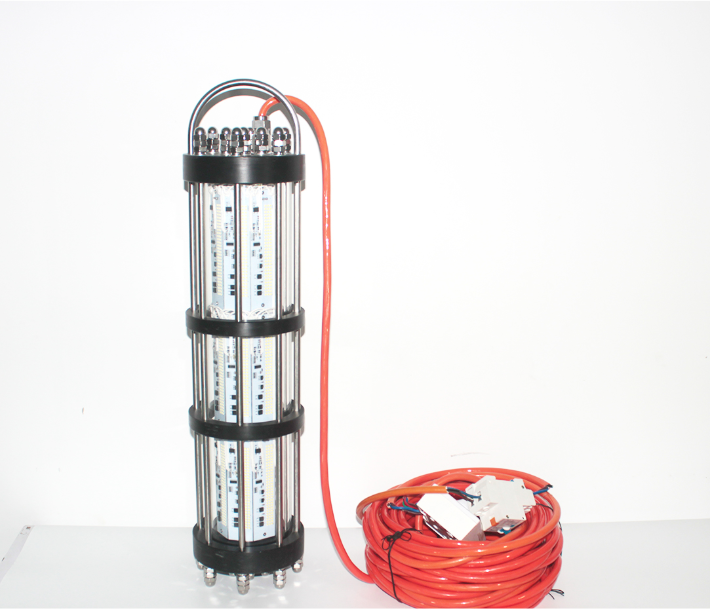
Illustrative Image (Source: Google Search)
By understanding these manufacturing processes and quality assurance practices, international B2B buyers can make informed decisions when sourcing 1500W LED fishing lights, ensuring they invest in high-quality products that meet their operational needs.
Comprehensive Cost and Pricing Analysis for Looking for 1500W LED fishing light Sourcing
When sourcing a 1500W LED fishing light, understanding the comprehensive cost structure and pricing dynamics is essential for international B2B buyers. This analysis will break down the key cost components, identify price influencers, and provide actionable tips for effective negotiations.
Cost Components
-
Materials
- The primary materials for 1500W LED fishing lights include high-quality LEDs, aluminum or plastic casings, lenses, and electrical components. The choice of materials directly impacts durability and performance. For instance, using marine-grade aluminum may increase upfront costs but can lead to longer product life in corrosive environments.
-
Labor
- Labor costs can vary significantly based on the manufacturing location. Countries with lower labor costs may offer competitive pricing, but it is crucial to consider the skill level of the workforce. Skilled labor can improve product quality and reduce defects, ultimately impacting total cost.
-
Overhead
- Overhead includes expenses related to production facilities, utilities, administrative costs, and equipment maintenance. A manufacturer with efficient operations may pass on savings to buyers, resulting in a lower base price for the fishing lights.
-
Quality Control (QC)
- Implementing robust quality control measures can add to the cost. However, investing in QC is essential to ensure the reliability and safety of the products. Buyers should inquire about QC processes to gauge the manufacturer’s commitment to quality.
-
Logistics
- Transportation costs, including shipping and handling, can significantly affect the final price. For international shipments, factors such as distance, shipping method, and customs duties must be considered. Understanding these logistics can help buyers anticipate costs and plan budgets accordingly.
Price Influencers
-
Volume
- Bulk purchasing often leads to discounts. Suppliers are generally more willing to negotiate pricing for larger orders, which can dramatically reduce the per-unit cost. Buyers should assess their needs carefully and consider placing larger orders to maximize savings.
-
Specifications
- The technical specifications of the fishing lights, such as lumen output, energy efficiency, and additional features (like waterproof ratings), can influence pricing. Custom specifications may lead to higher costs, so buyers should determine their essential requirements before engaging suppliers.
-
Quality
- Higher quality products typically come with a premium price tag. Buyers must balance the initial investment against long-term performance and reliability. A cheaper option may result in higher maintenance costs or shorter lifespans, increasing the overall Total Cost of Ownership (TCO).
Buyer Tips
-
Negotiation Strategies
- Engage in open discussions with suppliers about pricing and be prepared to negotiate. Highlight your purchasing potential (volume) and express interest in long-term partnerships, which may incentivize suppliers to offer better rates.
-
Total Cost of Ownership (TCO)
- Consider the TCO, which includes purchase price, maintenance, energy consumption, and disposal costs. A higher upfront cost can be justified if the product offers significant savings over its lifetime. Request detailed information on energy efficiency ratings and expected lifespan to make informed comparisons.
-
Supplier Selection
- Research potential suppliers thoroughly. Evaluate their reputation, product reviews, and financial stability. A reliable supplier is likely to provide consistent quality and better support, reducing risks associated with sourcing.
-
Market Trends
- Stay informed about market trends and technological advancements in LED lighting. This knowledge can help in negotiations and ensure that you are sourcing the most advanced and cost-effective solutions available.
By understanding these cost components and price influencers, international B2B buyers can make informed decisions when sourcing 1500W LED fishing lights, ensuring they receive quality products at competitive prices while effectively managing their budgets.
Spotlight on Potential Looking for 1500W LED fishing light Manufacturers and Suppliers
This section looks at several manufacturers active in the ‘Looking for 1500W LED fishing light’ market. This is a representative sample for illustrative purposes; B2B buyers must conduct extensive due diligence.
Peonylighting – Rating 5.0
The company specializes in high-powered LED fishing lights, offering models of 1200W, 1500W, and 2000W designed to attract fish effectively. Their focus on energy-efficient lighting solutions caters to both commercial and recreational fishermen. With a commitment to quality and performance, the supplier aims to enhance fishing experiences while ensuring durability and reliability in various marine environments.
- …
Nsslighting – Welcome to New Sunshine LED Lighting
Light Weight Portable Boat Fishing specializes in high-performance 1500W LED fishing lights, particularly designed for squid fishing. Their product range emphasizes portability and efficiency, catering to the needs of both amateur and professional anglers. With a focus on bright, green illumination to attract fish, the company likely leverages advanced LED technology to enhance the fishing experience while ensuring durability and ease of use in various marine environments.
- …
M – Bolaipu, your reliable LED fishing light
Bolaipu is a trusted manufacturer specializing in high-performance LED fishing lights, particularly offering a robust 1500W model designed for optimal visibility and energy efficiency. With a commitment to quality and innovation, Bolaipu focuses on providing reliable lighting solutions that enhance fishing experiences. Their extensive product range caters to both commercial and recreational fishermen, ensuring durable and effective lighting for various aquatic environments.
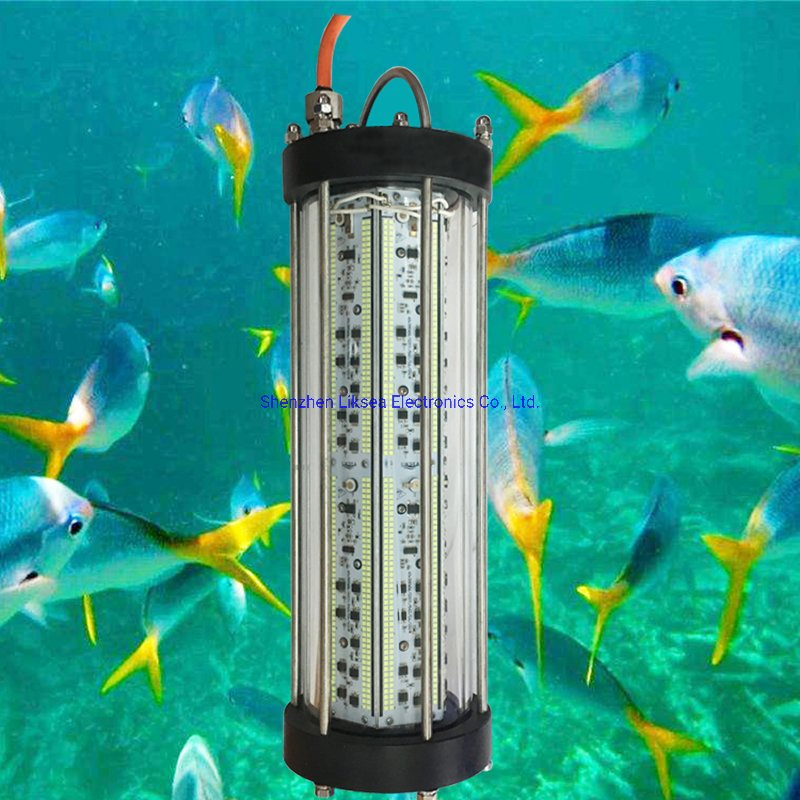
Illustrative Image (Source: Google Search)
- …
Shenzhen – Company: Shenzhen Liksea Electronics Co., Ltd.
Shenzhen Fishing Products is a leading manufacturer specializing in high-quality fishing equipment, with a strong emphasis on innovative lighting solutions. Their flagship product, the 1500W LED fishing light, showcases their commitment to enhancing fishing experiences through advanced technology. With a focus on durability and efficiency, Shenzhen Fishing Products aims to serve international B2B buyers seeking reliable and effective fishing gear for various aquatic environments.
- …
Essential Technical Properties and Trade Terminology for Looking for 1500W LED fishing light
When sourcing a 1500W LED fishing light, it is essential to understand the technical specifications and trade terminology that will help you make informed purchasing decisions. Below are critical technical properties and industry terms relevant to this product.
Key Technical Properties
-
Lumen Output
- Definition: Lumen output measures the total amount of visible light emitted by the light source. For a 1500W LED fishing light, high lumen output is crucial as it determines how effectively the light can attract fish.
- Importance: A higher lumen output ensures better visibility during night fishing, which can significantly enhance catch rates.
-
Color Temperature
- Definition: Color temperature is measured in Kelvin (K) and indicates the hue of the light emitted. Common ranges for fishing lights are between 3000K (warm yellow) to 6000K (cool white).
- Importance: Different color temperatures can influence fish behavior. For instance, cooler temperatures (5000K-6000K) are often more effective in deep waters.
-
Beam Angle
- Definition: The beam angle refers to the spread of light emitted by the fixture, typically measured in degrees.
- Importance: A wider beam angle (e.g., 120 degrees) provides more coverage, making it suitable for larger areas, while a narrow beam (e.g., 30 degrees) can penetrate deeper waters.
-
Power Consumption and Efficiency
- Definition: This indicates how much electricity the light uses in relation to its lumen output, often expressed as lumens per watt (lm/W).
- Importance: Efficient lights provide more brightness with less energy consumption, reducing operational costs and extending battery life in portable applications.
-
Durability and IP Rating
- Definition: The Ingress Protection (IP) rating indicates the level of protection against dust and water. For marine environments, an IP68 rating is ideal.
- Importance: A high IP rating ensures that the light can withstand harsh conditions, including water immersion and exposure to saltwater, which is crucial for longevity.
-
Material Composition
- Definition: The materials used in the housing of the LED light, such as aluminum or high-grade plastic.
- Importance: Corrosion-resistant materials extend the life of the light, especially in marine environments where exposure to saltwater is common.
Common Trade Terminology
-
OEM (Original Equipment Manufacturer)
- Definition: A company that produces parts or equipment that may be marketed by another manufacturer.
- Relevance: When sourcing LED fishing lights, understanding OEM relationships can help in identifying quality and reliability in products.
-
MOQ (Minimum Order Quantity)
- Definition: The smallest quantity of a product that a supplier is willing to sell.
- Relevance: Knowing the MOQ helps buyers plan their inventory and negotiate better pricing with suppliers, especially for bulk purchases.
-
RFQ (Request for Quotation)
- Definition: A formal document sent to suppliers requesting pricing and terms for specified products.
- Relevance: Submitting an RFQ is an effective way to gather competitive offers and assess the market for LED fishing lights.
-
Lead Time
- Definition: The amount of time between placing an order and receiving the product.
- Relevance: Understanding lead times is essential for planning, especially in industries where timing is critical, such as fishing seasons.
-
Warranty Period
- Definition: The duration during which the manufacturer guarantees the product against defects.
- Relevance: A longer warranty period can indicate manufacturer confidence in product quality and provide peace of mind for buyers.
-
Certification Standards
- Definition: Compliance with industry standards and regulations, such as CE, RoHS, or UL.
- Relevance: Certifications ensure that products meet safety and environmental standards, which is vital for international trade and market acceptance.
By familiarizing yourself with these technical properties and trade terms, you will be better equipped to make informed decisions when purchasing 1500W LED fishing lights, ensuring they meet your operational needs and regulatory requirements.
Navigating Market Dynamics, Sourcing Trends, and Sustainability in the Looking for 1500W LED fishing light Sector
As the global demand for efficient and powerful lighting solutions continues to rise, the market for 1500W LED fishing lights is experiencing significant growth. This sector is particularly relevant for B2B buyers in Africa, South America, the Middle East, and Europe, where fishing is not only a vital source of food but also a key economic driver.
Market Overview & Trends
The 1500W LED fishing light market is evolving rapidly, driven by advancements in LED technology that enhance energy efficiency, brightness, and durability. The global push towards sustainable practices has led to a marked increase in the adoption of LED lighting solutions, which consume significantly less power compared to traditional lighting systems. According to industry reports, the LED market is projected to grow at a CAGR of over 10% from 2023 to 2030, with fishing lights being a substantial segment.
In regions like Africa and South America, where artisanal and commercial fishing plays a crucial role, the demand for high-intensity lighting that can attract fish and improve catch rates is increasing. B2B buyers are particularly interested in products that not only meet their operational needs but also align with regulatory standards and sustainability goals. The Middle East and Europe are witnessing a similar trend, with a focus on advanced features such as remote control capabilities, programmable lighting patterns, and smart technology integrations that enhance operational efficiency.
Moreover, the rise of e-commerce platforms has simplified the sourcing process, allowing international buyers to access a wider range of suppliers and products. This trend enables them to compare prices, specifications, and reviews, facilitating informed purchasing decisions.
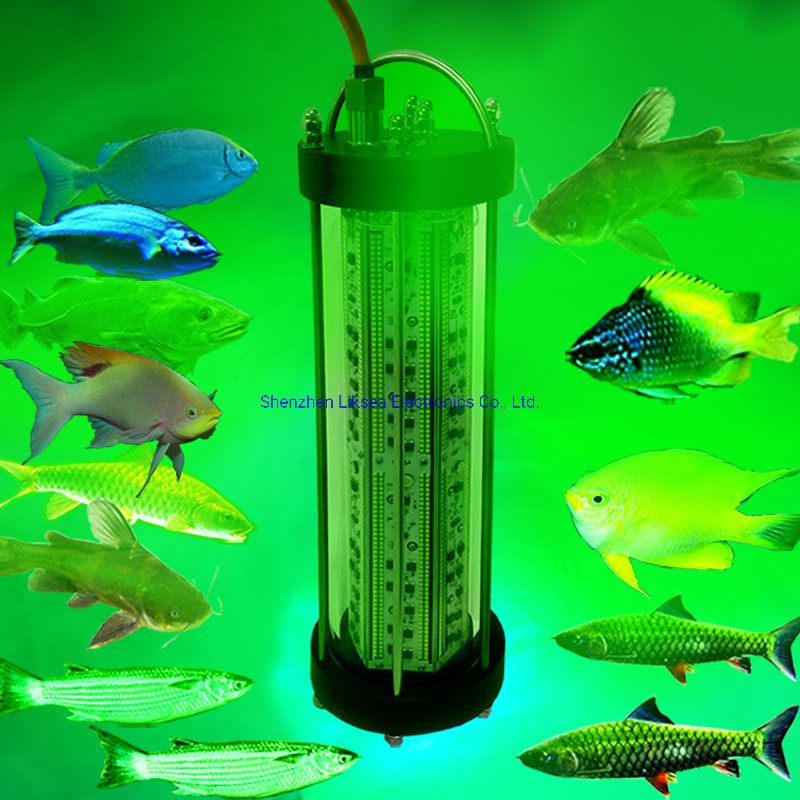
Illustrative Image (Source: Google Search)
Sustainability & Ethical Sourcing
Sustainability is becoming a critical consideration for B2B buyers in the 1500W LED fishing light sector. The environmental impact of fishing operations, combined with the energy consumption of lighting solutions, necessitates a shift towards more sustainable practices. Buyers are increasingly prioritizing products that are energy-efficient, have a longer lifespan, and are made from recyclable materials.
Ethical sourcing also plays a significant role in purchasing decisions. Suppliers that adhere to responsible manufacturing practices and provide transparency in their supply chains are more likely to attract international buyers. This includes the use of non-toxic materials and compliance with environmental regulations, which is particularly important in regions with stringent laws governing sustainability.
Furthermore, as consumers become more environmentally conscious, businesses that demonstrate a commitment to sustainability can enhance their brand reputation and customer loyalty. For B2B buyers, partnering with suppliers that prioritize sustainability can lead to long-term benefits, including reduced operational costs and improved compliance with local and international regulations.
Brief Evolution/History
The evolution of fishing lights has been closely tied to advancements in lighting technology. Initially, incandescent lights were the standard, but they were soon replaced by fluorescent lights due to their greater efficiency and longer lifespan. The introduction of LED technology marked a significant turning point in the industry. LEDs not only offered higher energy efficiency but also provided more robust lighting solutions suitable for harsh marine environments.
Over the last decade, the development of 1500W LED fishing lights has revolutionized commercial fishing practices. These lights are designed to withstand the rigors of marine environments while providing optimal brightness to attract fish. As technology continues to advance, innovations such as solar-powered LED lights and smart lighting systems are emerging, further enhancing the capabilities and appeal of LED fishing lights in the global market.
In summary, the 1500W LED fishing light sector is characterized by rapid growth, a focus on sustainability, and ongoing technological advancements. For international B2B buyers, staying abreast of these trends is essential for making informed purchasing decisions that align with their operational needs and sustainability goals.
Frequently Asked Questions (FAQs) for B2B Buyers of Looking for 1500W LED fishing light
-
What criteria should I consider when vetting suppliers for 1500W LED fishing lights?
When vetting suppliers, prioritize their experience in manufacturing LED lighting products, certifications (such as CE, RoHS, or ISO), and customer reviews. Request samples to assess product quality. Additionally, evaluate their production capacity to ensure they can meet your demands. Consider their communication responsiveness and after-sales support, as these factors are crucial for a successful partnership, especially when issues arise or customization is needed. -
Can I customize the 1500W LED fishing lights to fit my specific needs?
Yes, many suppliers offer customization options for 1500W LED fishing lights. You can request modifications such as color temperature, beam angle, and housing design. Discuss your requirements early in the negotiation process to understand the supplier’s capabilities and any additional costs involved. Ensure that you obtain prototypes to evaluate the changes before finalizing the order. -
What is the typical Minimum Order Quantity (MOQ) for 1500W LED fishing lights?
The MOQ for 1500W LED fishing lights varies significantly among suppliers, typically ranging from 50 to 500 units. Factors influencing MOQ include production capacity, customization options, and pricing strategies. When negotiating, express your needs clearly and inquire if lower MOQs are possible for first-time orders or trial runs. Establishing a long-term relationship may also lead to more flexible terms. -
How can I ensure quality assurance (QA) for the LED fishing lights I purchase?
To ensure quality assurance, request documentation of the supplier’s QA processes and certifications. Conduct factory audits if possible, or hire third-party inspection services to verify product quality before shipment. Specify your quality standards in the purchase agreement, including acceptable defect rates and testing methods. Regular communication throughout the production process can also help preemptively address any issues. -
What logistics considerations should I keep in mind when importing 1500W LED fishing lights?
Consider shipping methods (air vs. sea), delivery timelines, and associated costs when importing. Familiarize yourself with customs regulations and tariffs in your region to avoid unexpected fees. Work with suppliers who can assist in logistics management, including packaging that meets international shipping standards. Additionally, ensure you have a clear understanding of who is responsible for shipping and any potential risks during transit. -
What are the warranty and return policy options for 1500W LED fishing lights?
Warranty periods for LED fishing lights typically range from one to three years, covering defects in materials and workmanship. Before placing an order, clarify the warranty terms and what they entail. Additionally, understand the return policy for defective products, including shipping responsibilities and timelines for returns. A transparent policy can help mitigate risks and enhance your confidence in the supplier. -
How can I assess the reliability of a supplier’s delivery timelines?
To assess reliability, request historical delivery performance data from the supplier, including on-time delivery rates. Discuss their production scheduling processes and any potential bottlenecks. Building a relationship based on transparency can also help, as reliable suppliers will communicate proactively about any delays. Consider starting with smaller orders to evaluate their delivery consistency before committing to larger quantities. -
What are the key certifications to look for in 1500W LED fishing lights?
Key certifications include CE (Conformité Européenne) for compliance with European safety standards, RoHS (Restriction of Hazardous Substances) for environmental compliance, and UL (Underwriters Laboratories) for safety testing. These certifications ensure that the products meet specific safety, efficiency, and environmental standards. Confirming these certifications can enhance your product’s marketability and ensure compliance with local regulations.
Important Disclaimer & Terms of Use
⚠️ Important Disclaimer
The information provided in this guide is for informational and educational purposes only. It does not constitute professional procurement, financial, or legal advice.
While we have made every effort to ensure accuracy, we are not responsible for any errors or omissions. Market conditions and company details are subject to change.
B2B buyers must conduct their own independent and thorough due diligence before making any purchasing decisions.
Strategic Sourcing Conclusion and Outlook for Looking for 1500W LED fishing light
In conclusion, strategic sourcing for 1500W LED fishing lights offers international B2B buyers a distinct advantage in optimizing costs and enhancing operational efficiency. Key takeaways include the importance of evaluating supplier reliability, understanding regional regulations, and prioritizing sustainable practices. By fostering relationships with manufacturers that emphasize quality and innovation, buyers can ensure that their lighting solutions not only meet current demands but also adapt to future challenges.
Investing in strategic sourcing enables companies to streamline procurement processes, reduce lead times, and ultimately improve their bottom line. As the fishing industry continues to evolve, driven by technological advancements and environmental considerations, the need for efficient, high-performance lighting solutions becomes ever more critical.
Looking ahead, B2B buyers should remain vigilant in monitoring market trends and emerging technologies in LED lighting. Engaging in collaborative partnerships with suppliers will facilitate knowledge exchange and innovation, positioning businesses for long-term success. Now is the time to act—evaluate your sourcing strategies and explore the vast potential that 1500W LED fishing lights can bring to your operations.

